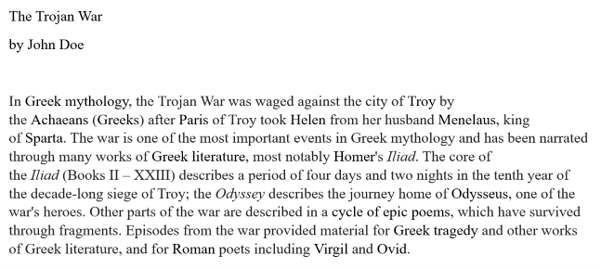Copywriting 101
- Course Introduction
- Understanding Your Audience
- Writing Effective Headlines and Taglines
- Crafting Persuasive Body Copy
- Writing for Different Mediums
- SEO and Content Marketing Writing
- Legal and Ethical Considerations
- The Revision Process
- Building a Portfolio
- Real-world Applications
- Integration and Application (Extra time for Project Completion)
SEO and Content Marketing Writing
Avoiding Plagiarism and Misinformation in Copywriting

Using another author's work as if it was one's own original work.
In the world of copywriting, maintaining integrity and credibility is paramount. This involves avoiding plagiarism and misinformation, two practices that can severely damage a writer's reputation and potentially lead to legal consequences. This article will delve into the definitions, impacts, and strategies to avoid these pitfalls in copywriting.
Understanding Plagiarism
Plagiarism is the act of using someone else's work without giving them due credit, making it seem as if it is your own. In copywriting, this could involve copying text from another source and presenting it as original content. Plagiarism is not only unethical but also illegal, as it infringes on the original author's copyright.
The Impact of Plagiarism
The consequences of plagiarism can be severe. It can lead to legal action from the original author, damage to the copywriter's professional reputation, and loss of trust from clients and readers. In some cases, it can also result in the termination of contracts and loss of business.
Techniques to Avoid Plagiarism
Avoiding plagiarism involves being aware of what constitutes plagiarism and taking steps to ensure originality in your work. Here are some strategies:
-
Cite Your Sources: If you use information from another source, always give credit to the original author. This can be done through in-text citations, footnotes, or a bibliography.
-
Paraphrase: Instead of copying text verbatim, try to understand the information and express it in your own words. Remember, changing a few words here and there is not enough; the structure and phrasing should be significantly different.
-
Use Plagiarism Detection Tools: There are numerous online tools that can help detect plagiarism in a piece of text. These tools compare your work with millions of other documents on the internet and highlight any matching phrases.
Understanding Misinformation
Misinformation refers to false or inaccurate information, regardless of whether there is an intention to deceive. In copywriting, this could involve making false claims about a product or service, or presenting outdated or incorrect information as fact.
The Impact of Misinformation
Misinformation can lead to loss of credibility, damage to a brand's reputation, and potential legal consequences. It can also mislead consumers, leading to poor decision-making and a loss of trust in the brand.
Fact-Checking and Verifying Information
To avoid spreading misinformation, it's crucial to fact-check and verify all information before publishing. This involves:
-
Using Reliable Sources: Always gather information from reputable and reliable sources. Be wary of unverified information on social media or blogs.
-
Double-Checking Facts: Even if information comes from a reliable source, it's always a good idea to cross-check with other sources.
-
Staying Updated: Information, especially in fields like technology and health, can change rapidly. Make sure the information you're using is current and up-to-date.
In conclusion, avoiding plagiarism and misinformation is crucial in maintaining integrity and credibility in copywriting. By understanding what these practices entail and how to avoid them, copywriters can uphold high standards of professionalism in their work.